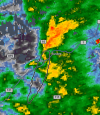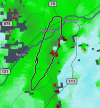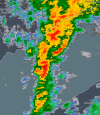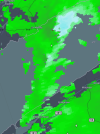...D6/Monday Plains and MS Valley...
To the west of the departing upper low, a second Pacific trough will
move onshore over the Northwest late this weekend before
intensifying early next week. As the main trough and several
small-scale perturbations within enhanced westerly flow aloft cross
the Rockies, a surface low may develop over the Plains potentially
allowing for some northward return of moisture coincident with
increased vertical shear. This could support thunderstorms and some
severe risk across the eastern Plains and Mid/Lower MS Valley.
Model guidance remains highly varied on the evolution of this system
with the GEFS/GFS notable outliers in its intensity among other
solutions. Guidance has trended toward an overall less amplified and
more disjointed evolution, with persistent mid-level troughing over
the eastern US. This would likely suppress northward return moisture
and any potential warm sector over the Plains and Mid MS Valley.
Still, some severe risk remains possible over the southern Plains
and lower MS valley early next week given the increase in surface
moisture and flow aloft. However, the evolution and potential
hazards remains very uncertain.




